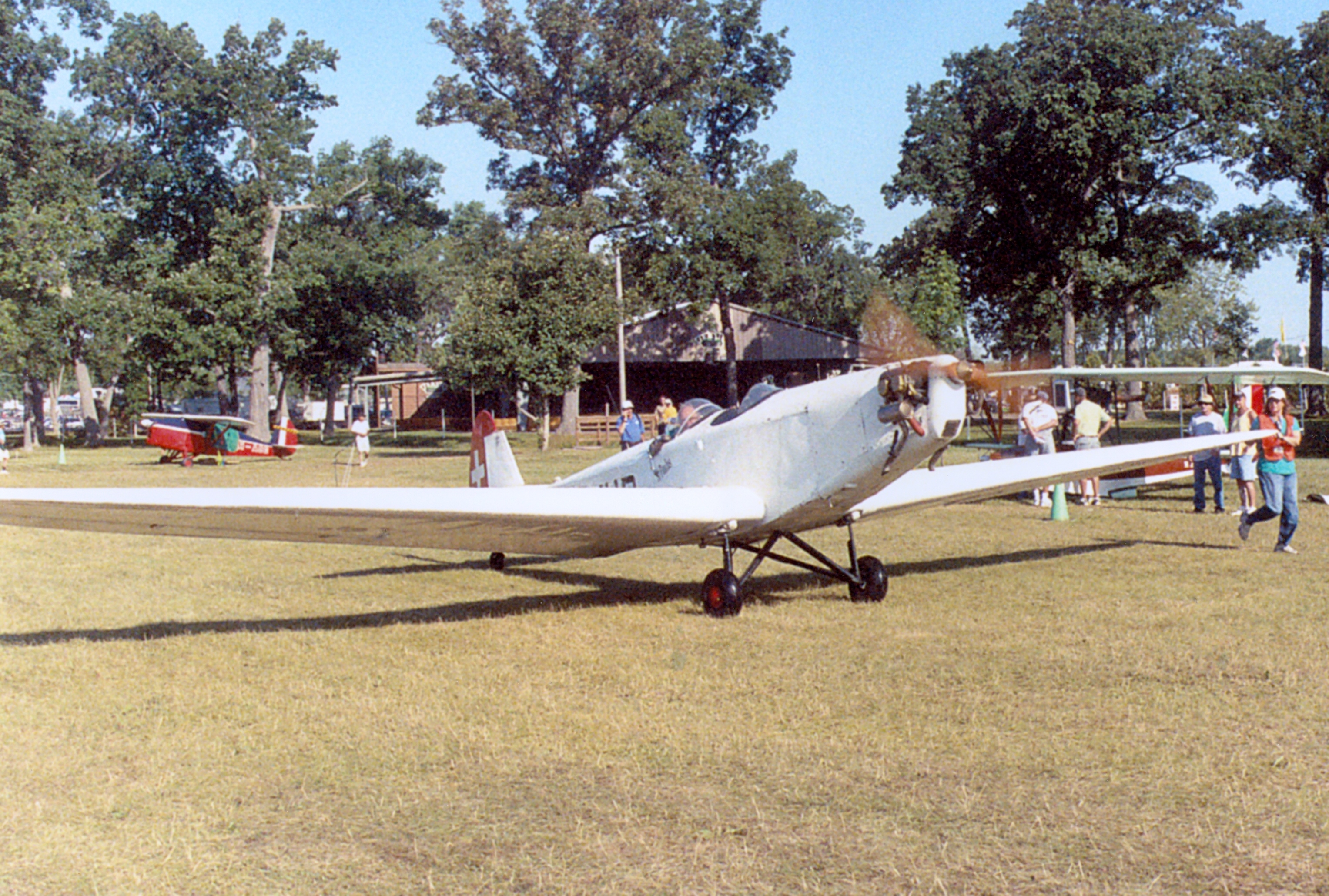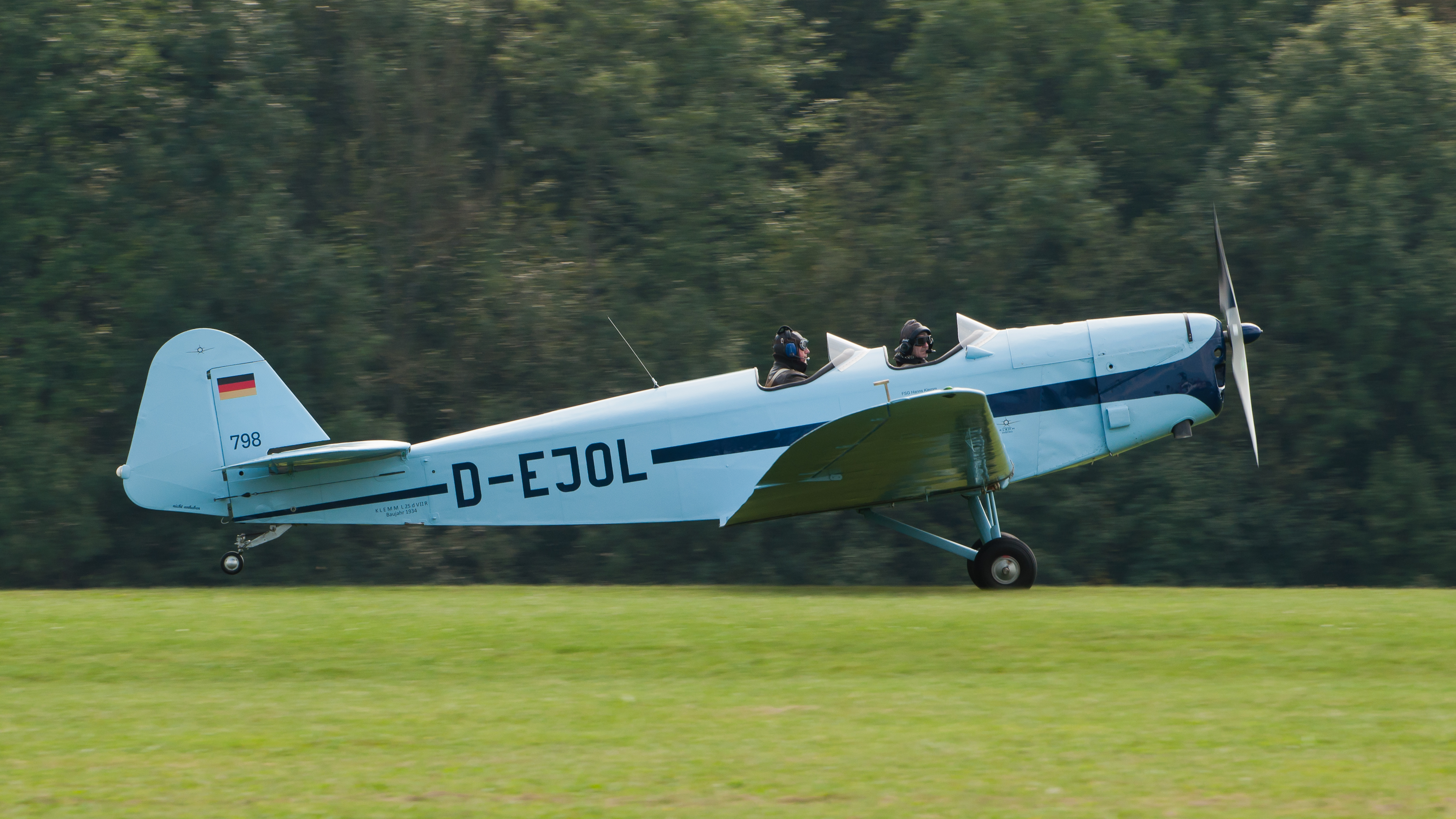Klemm Kl 25 on:
[Wikipedia]
[Google]
[Amazon]

 Klemm L 25, later Klemm Kl 25 was a successful
Klemm L 25, later Klemm Kl 25 was a successful
 ;L 25 d VII: Equipped with a Hirth HM 60R engine
;L 25 IVa: Equipped with Armstrong Siddeley Genet engine
;VL 25 Va: Three-seater variant, with a closed canopy, equipped with Argus As 8 straight engine
;L 25 Ve: (see L 25E) For Europa Rundflug 1930
;L 25E: (L 25 Ve) Special competition variant (E for Europa Rundflug 1930), with a closed canopy, smaller span, equipped with a Argus As 8
;:
: British Klemm Aeroplane Company B.K. Swallow
: British Aircraft Manufacturing Co. B.A. Swallow II
;:
:Aeromarine-Klemm AKL-25
:Aeromarine-Klemm AKL-70
:Aeromarine-Klemm Model 70 Trainer
;L 25 d VII: Equipped with a Hirth HM 60R engine
;L 25 IVa: Equipped with Armstrong Siddeley Genet engine
;VL 25 Va: Three-seater variant, with a closed canopy, equipped with Argus As 8 straight engine
;L 25 Ve: (see L 25E) For Europa Rundflug 1930
;L 25E: (L 25 Ve) Special competition variant (E for Europa Rundflug 1930), with a closed canopy, smaller span, equipped with a Argus As 8
;:
: British Klemm Aeroplane Company B.K. Swallow
: British Aircraft Manufacturing Co. B.A. Swallow II
;:
:Aeromarine-Klemm AKL-25
:Aeromarine-Klemm AKL-70
:Aeromarine-Klemm Model 70 Trainer
Old Rhinebeck Aerodrome's Aeromarine-Klemm AKL-26 page
{{RLM aircraft designations 1920s German civil trainer aircraft 1920s German sport aircraft Klemm aircraft Single-engined tractor aircraft Aircraft first flown in 1928

 Klemm L 25, later Klemm Kl 25 was a successful
Klemm L 25, later Klemm Kl 25 was a successful German
German(s) may refer to:
* Germany (of or related to)
**Germania (historical use)
* Germans, citizens of Germany, people of German ancestry, or native speakers of the German language
** For citizens of Germany, see also German nationality law
**Ge ...
light leisure, sports and training monoplane
A monoplane is a fixed-wing aircraft configuration with a single mainplane, in contrast to a biplane or other types of multiplanes, which have multiple planes.
A monoplane has inherently the highest efficiency and lowest drag of any wing con ...
aircraft, developed in 1928. More than 600 aircraft were built, and manufacturing licenses were sold to the United Kingdom
The United Kingdom of Great Britain and Northern Ireland, commonly known as the United Kingdom (UK) or Britain, is a country in Europe, off the north-western coast of the continental mainland. It comprises England, Scotland, Wales and ...
and the United States
The United States of America (U.S.A. or USA), commonly known as the United States (U.S. or US) or America, is a country Continental United States, primarily located in North America. It consists of 50 U.S. state, states, a Washington, D.C., ...
.
Design and construction
With a low cantilever wing, fixed landing gear, and two open cockpits, the aircraft was developed by Hanns Klemm, who used his previous design, the Daimler L20, as a starting point. It first flew on a Daimler F7502 engine. About 30 different versions of the Kl 25 were made, and these were equipped with engines ranging from . The fuselage was covered with plywood. Depending on the model, the aircraft's weight was , and it had a wingspan. Takeoff was achieved at only and the maximum speed was between . In relation to similar aircraft of the time, assembly was very easy, and this made it a very popular aircraft. According to the sales brochures, only 25% of the engine's power was needed to keep the aircraft flying, compared tobiplane
A biplane is a fixed-wing aircraft with two main wings stacked one above the other. The first powered, controlled aeroplane to fly, the Wright Flyer, used a biplane wing arrangement, as did many aircraft in the early years of aviation. While a ...
s of the period, which required 50% engine power.
About 600 were built in Germany between 1929 and 1936, serving with various flight training organizations, with either wheels, skis, or floats. 15 were sold to Britain before the Second World War
World War II or the Second World War, often abbreviated as WWII or WW2, was a world war that lasted from 1939 to 1945. It involved the vast majority of the world's countries—including all of the great powers—forming two opposi ...
, being fitted with a variety of domestic engines, while 28 more were built by British Klemm Aeroplane Company as the B.A. Swallow. Production in the United States was carried out by the Aeromarine-Klemm Company which enjoyed moderate success, as well as developing models for the American market, in isolation from the parent company, with about 120 built of all models.
Operation
Klemm L 25s took part in many competitions, among others in International Touring Aircraft Competitions (Europa Rundflug) in 1929 (best 4th place) and in 1930 (best 2nd and 3rd places, L 25E variant).Variants
:''NB, list not complete'' ; ;L 25 a: Built between 1927 and 1929, equipped with a Daimler F 7502 engine ;L 25 I: Built between 1928 and 1929, equipped with aSalmson AD.9
British Salmson aero-engines refers to a series of small French designed, air-cooled radial aero engine that were produced by British Salmson Aero Engines Ltd, under license from Société des Moteurs Salmson, in Great Britain during the late ...
engine
;L 25 Ia:
;L 25 IW:Floatplane version of the Ia, with two wooden floats supported by steel-tube struts in inverted 'W' configuration
;L 25 b: Built in 1931, equipped with a Daimler F 7502 engine
;L 25 b VII: Built in 1931, equipped with a Hirth HM 60
The Hirth HM 60 was a four-cylinder inverted air-cooled inline aircraft engine designed in 1923 and first sold in 1924. The engine was of very high quality, and its sales success contributed to Hirth's rapid pre-war expansion. It was a popular ...
engine
;L 25 d II: Built in 1933, equipped with an Siemens-Halske Sh 13a engine
 ;L 25 d VII: Equipped with a Hirth HM 60R engine
;L 25 IVa: Equipped with Armstrong Siddeley Genet engine
;VL 25 Va: Three-seater variant, with a closed canopy, equipped with Argus As 8 straight engine
;L 25 Ve: (see L 25E) For Europa Rundflug 1930
;L 25E: (L 25 Ve) Special competition variant (E for Europa Rundflug 1930), with a closed canopy, smaller span, equipped with a Argus As 8
;:
: British Klemm Aeroplane Company B.K. Swallow
: British Aircraft Manufacturing Co. B.A. Swallow II
;:
:Aeromarine-Klemm AKL-25
:Aeromarine-Klemm AKL-70
:Aeromarine-Klemm Model 70 Trainer
;L 25 d VII: Equipped with a Hirth HM 60R engine
;L 25 IVa: Equipped with Armstrong Siddeley Genet engine
;VL 25 Va: Three-seater variant, with a closed canopy, equipped with Argus As 8 straight engine
;L 25 Ve: (see L 25E) For Europa Rundflug 1930
;L 25E: (L 25 Ve) Special competition variant (E for Europa Rundflug 1930), with a closed canopy, smaller span, equipped with a Argus As 8
;:
: British Klemm Aeroplane Company B.K. Swallow
: British Aircraft Manufacturing Co. B.A. Swallow II
;:
:Aeromarine-Klemm AKL-25
:Aeromarine-Klemm AKL-70
:Aeromarine-Klemm Model 70 Trainer
Operators
; *Bolivian Air Force
The Bolivian Air Force ( es, Fuerza Aérea Boliviana or 'FAB') is the air force of Bolivia and branch of the Bolivian Armed Forces.
History
By 1938 the Bolivian air force consisted of about 60 aircraft (Curtiss Hawk fighters, Curtiss T-32 Co ...
;
*Royal Hungarian Air Force
The Hungarian Air Force ( hu, Magyar Légierő), is the air force branch of the Hungarian Defence Forces.
The task of the current Hungarian Air Force is primarily defensive purposes. The flying units of the air force are organised into a single ...
;
*Peruvian Air Force
The Peruvian Air Force ( es, link=no, Fuerza Aérea del Perú, FAP) is the branch of the Peruvian Armed Forces tasked with defending the nation and its interests through the use of air power. Additional missions include assistance in safeguardin ...
;
*Royal Romanian Air Force
The Air Force branch of the Royal Romanian forces in World War II was officially named the (ARR), or the Romanian Royal Aeronautics, though it is more commonly referred to in English histories as the (Royal Romanian Air Force, FARR), or simply ...
;
*South African Air Force
"Through hardships to the stars"
, colours =
, colours_label =
, march =
, mascot =
, anniversaries =
, equipment ...
Specifications (L 25.Ia)
See also
References
Bibliography
* Gerdessen, Frederik. "Estonian Air Power 1918 – 1945". ''Air Enthusiast
''Air Enthusiast'' was a British, bi-monthly, aviation magazine, published by the Key Publishing group. Initially begun in 1974 as ''Air Enthusiast Quarterly'', the magazine was conceived as a historical adjunct to ''Air International'' maga ...
'', No. 18, April – July 1982. pp. 61–76. .
External links
Old Rhinebeck Aerodrome's Aeromarine-Klemm AKL-26 page
{{RLM aircraft designations 1920s German civil trainer aircraft 1920s German sport aircraft Klemm aircraft Single-engined tractor aircraft Aircraft first flown in 1928